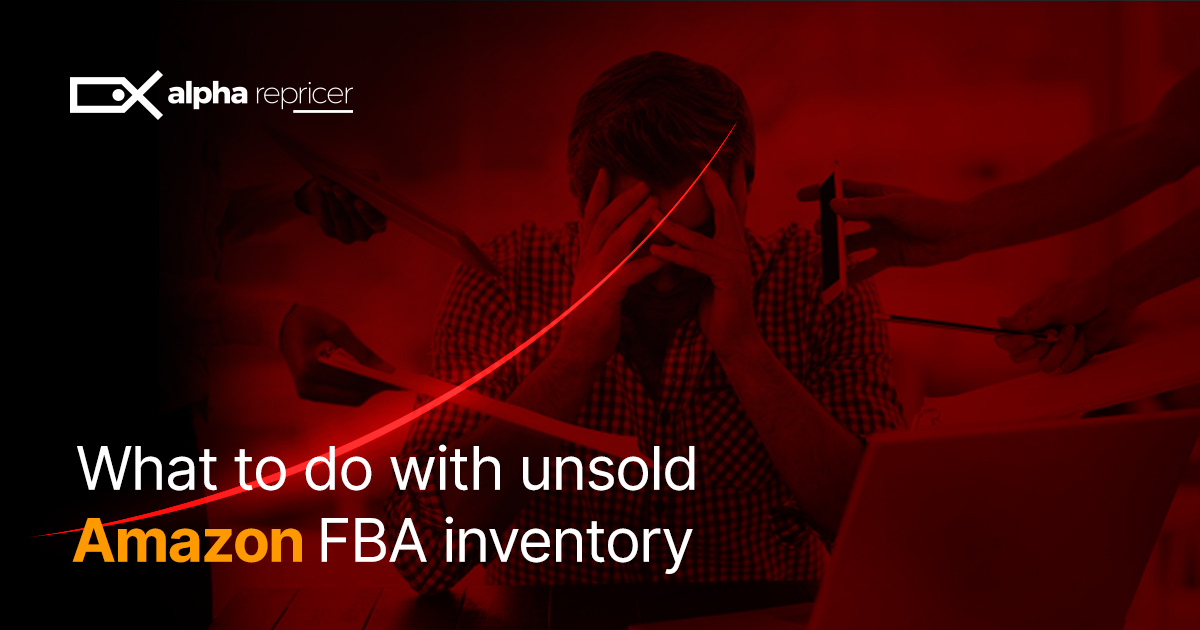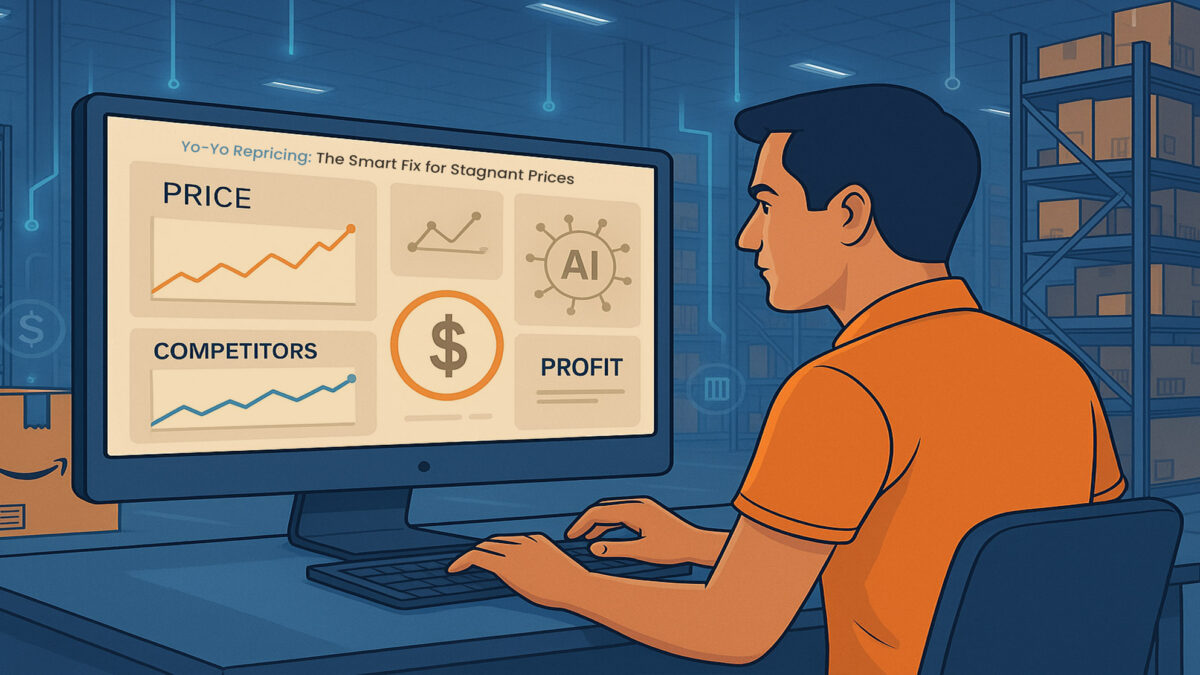FBA sellers can get stuck with unsold inventory in Amazon warehouses. However, Amazon keeps excellent track of how much inventory its third-party sellers send in. Amazon sellers should follow the seller central closely to make sure inventory is getting sold at a good pace. Even with careful planning sometimes sellers may end up with inventory that just does not move. In such cases, sellers need to take timely steps to handle the unsold inventory.
The whole concept of FBA is remarkable. It is one of the key reasons for Amazon’s success in eCommerce. It is incredible that Amazon FBA manages the storage of our inventory at such low cost. But they had much rather sell that inventory than let it sit in their warehouse shelves. That is one of the reasons the longterm storage fees are costllier than regular storage. Its Amazon’s way of encouraging FBA sellers to make sure there is no unsold inventory laying around for months.
It may be hard to understand for new third-party sellers as to how something may not end up selling. After all, they have put in hours of research to only buy inventory that will sell swiftly for a nice profit. And then the Amazon platform displays their wares to millions of buyers. But it happens. Even the most experienced sellers with conventional sourcing criteria will end up with some unsold inventory in their Amazon account. Better than just feeling bad about products at Amazon warehouses that just never sold. Third-party sellers have opportunities for dealing with inventory that has not sold.
Following is a deeper look at why you need to know how much stale inventory you have in Amazon warehouses and how you can deal with it.
The necessity to focus on unsold inventory
Amazon is in the business of selling the third party sellers’ inventory. They do not want to turn their fulfillment centers into a seller’s personal storage. Therefore, they have some methods that are meant to encourage sellers to only ship inventory that will sell promptly. If your account has a large number of old, unsold inventory, you’ll end up giving extra storage fees to Amazon.
Amazon charges two primary fees on stored inventory: Long term storage fees and monthly storage fees. These fees are in addition to the per-item fees that are subtracted from your sold inventory. The storage fees are evaluated once per month. Long Term Storage Fees (LTSF) are only asked for an inventory that has been in a warehouse for more than 365 days.
Another reason is that you need to have a cash flow in order to put it back into your business. When items do not sell they become a liability since your money is tied up in that inventory. Why do department stores have ‘seasonal’ sales? They are basically cutting their losses to invest in new inventory that would be more in demand in accordance with the season. To get your money back to reinvest in new inventory, you need to sell items quickly. If something has not sold in 3 months, sellers need to reevaluate the sellability of that item. In order to grow your business, the prime method is to have a cash flow in your business That is why having a large amount of unsold inventory can hinder the development of your business.
Why Amazon needs to clear out unsold inventory
The quick answer to why Amazon has to dispose of stagnant inventory is that money matters.
• There is a cost to store the goods within the Amazon warehouse. The cost to hold, cycle count, and move products that are not selling in time is labor-intensive and therefore, expensive.
• There is limited space. Amazon needs to make productive use of every square foot within their warehouses as even with all the resources Amazon warehouses have, there is limited space for products. Building and maintaining warehouses is a cost that Amazon is willing to bear. But only as much as the returns are good. To re-iterate Amazon does not aim to be a storage company for unsold inventory.
• It is simply cost-effective to destroy the unsold merchandise locally than to ship them back to the sellers.
Options to handle the unsold inventory
Donate
Some of us wince at the thought of simply destroying inventory that may not be sellable but still usable. Yes, it would cost to bring it back and then take the effort to either get it picked up by donation centers. It is definitely not a money-making scheme and not for all palates. (No pun intended)
Cut your losses
Consider cutting your losses and do it in a timely manner. The longer you wait the harder it will be to sell. Especially things like consumer electronics get outdated very fast. This is one of the areas where ‘time is money’ proverb finds new meaning.
Having it shipped back to you will cost you. And once you have it returned to you, what will you do with it? If it has not done well on Amazon, there is a slim chance that it will sell online. You may consider selling to someone who sells in fleamarkets. Even then you will have to sell it at a price worth it for the others to buy and after factoring in their profits. So what do we mean by cut your rlosses?
Reprice and optimize your sale
Except for expired inventory the strategy of repricing works with everything. It is certainly worth dropping the price to try to get a sale for an inventory that just is moving slow. This will in effect cut your losses. Keeping up with your inventory requires you to be alert at all levels but mostly at the time of initial pricing, and then keeping up with the rate of sales. Understanding the market and pricing your inventory for a quick sale, to begin with, is an ideal business scenario. But if sales are not happening or slowing down, a seller should be able to reassess and consider lowering prices at the right time to minimize loss.
Alpha Repricer, the best Amazon repricing tool can help
It is one of the reasons you need the fastest amazon repricer. Lowering your price never feels good. But at a certain point, it really is beneficial to get as much money back out of it as possible. That way you can get rid of that old inventory, get a payout from Amazon, and reinvest in new (and more favorable) inventory. You can avoid going to very low prices by repricing with Alpha Repricer. The fastest Amazon repricing software, Alpha Repricer, optimizes your profit and keeps you in the Buy Box more often.
Sometimes just lowering by a few cents could land you in the Buy Box. As an Amazon seller, you know being the Buy Box can afford you a sale much easier than if you were not. So in effect, repricing at the right time in the life of your inventory may keep it from ending up in the stagnant stock. Instead of lowering your price, you may consider lowering your minimum only. This is a method better used for seasonal items. This way the Alpha Repricer’s repricing engine will only lower if the competition is pricing down, otherwise it will get the best price possible to stay in the Buy Box.
As you face new challenges day by day in your eCommerce life it’s better to adopt an automated repricing tool for quick results Alpha Repricer and its amazing Buy Box Hunter help you win the Buy Box. The dashboard shows the users exactly how the repricing is going. Information like the number of Buy Boxes won, listings with no competitors, etc. is at your fingertips. Alpha Repricer’s item analytics, repricing log, and sales reports will give you an insight into your business health. This in turn will help you in making better business decisions. Its innovative repricing will not cost you a fortune either.
At a reasonable cost, genuine dynamic features, setting standards for quality, Alpha Repricer is offering users technical support that actually helps. Try us free for 14 days.
Author
-
Noor Jarri
Meet Noor Jarri, a seasoned writer specializing in the dynamic world of Amazon. With over three years of experience, Noor has become a trusted resource for Amazon sellers seeking guidance on repricing strategies and navigating the e-commerce landscape. As a valued contributor to Alpha Repricer, Noor's expertise shines through in her engaging blog articles, press releases, and guest posts. Praised for her skill in crafting content that is both informative and approachable, Noor's writing is a knowledgeable resource for sellers of all levels. Beyond her professional pursuits, Noor is an avid traveler and culinary enthusiast. She finds inspiration in exploring new destinations and experimenting with recipes from around the world. Join Noor Jarri on her journey as she continues to empower Amazon sellers with insights, tips, and strategies to thrive in the ever-evolving marketplace.







